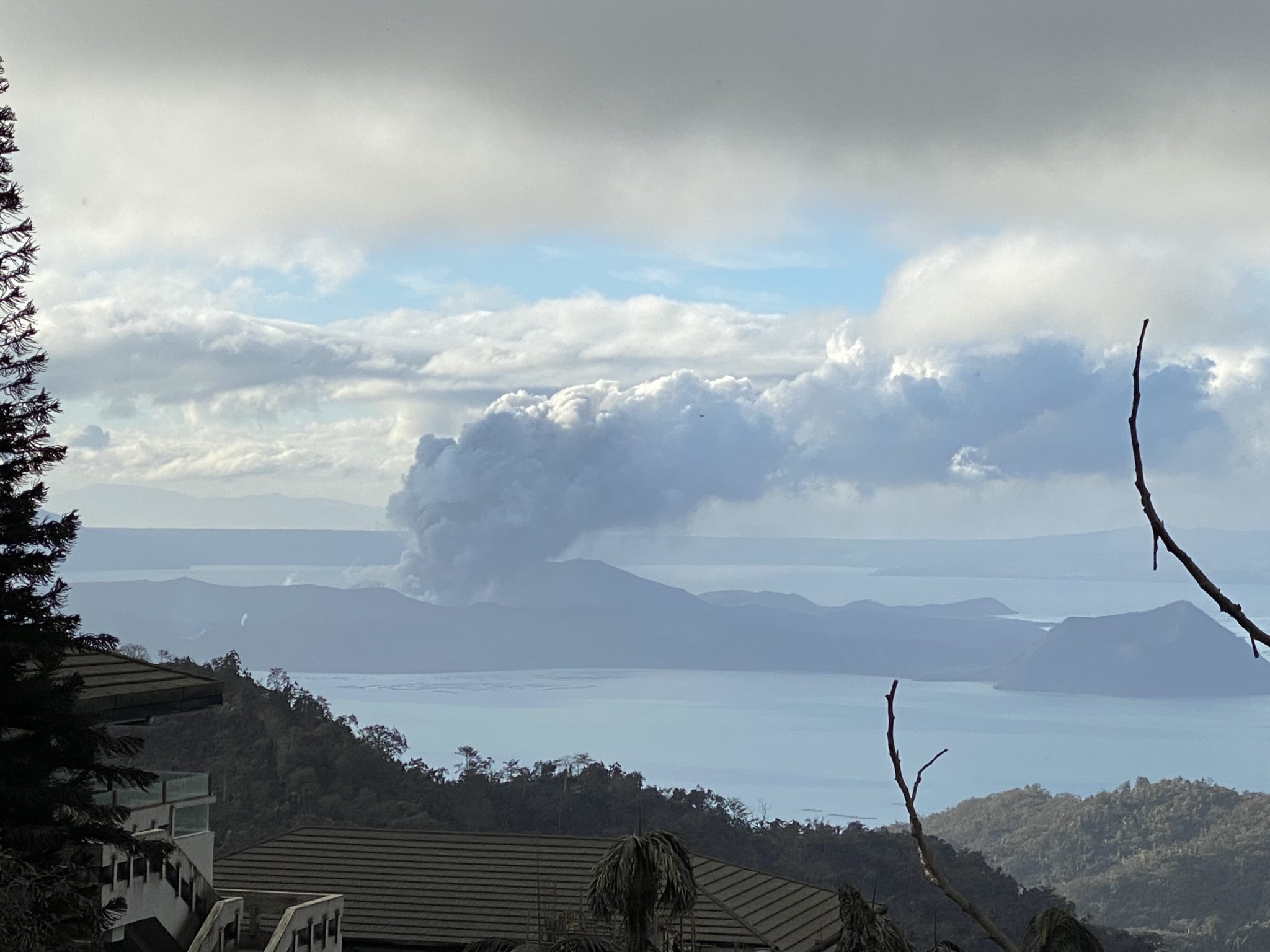Fissures crack open as Taal Volcanic Quakes Increase
Residents in the vicinity of the 14-kilometer danger zone of Taal volcano reported several fissures that developed consequent to earthquakes associated with the volcanic activity. Fissures are narrow openings or fractures of significant length and depth that form when the ground deforms consequent to tectonic movements or magmatic intrusions. The appearance of these fissures indicate the continued unrest of Taal Volcano, despite the seemingly weaker phreatic activity, according to Dr. Decibel F. Eslava, Dean of the School of Environmental Science and Management-University of the Philippines Los Baños (SESAM-UPLB).
Dr. Eslava also told the residents and officials, particularly in Barangay Sinisian East, Lemery Batangas, to be vigilant as future earthquakes can crack open new fissures and can cause additional damage in houses and infrastructures in the village. According to Barangay Chairwoman Teresa Salazar, a 3 km- long fissure cracked opened in the town not only damaging houses, but also uplifted a portion of the national highway in Lemery, Batangas. Barangay officials reported that the fissure reached the shores of Balayan Bay.




The barangay officials accompanied the SESAM-UPLB team in the ocular inspection of the damaged houses in the area. “The fissure not just damaged roads but also created big cracks on the walls and lifted floors of houses”, said Mr. Tony Capucion, Councilor, Barangay Sinisian East, Lemery, Batangas. He added that about 20 houses were severely damaged and irreparable.
The Philippine Institute of Volcanology and Seismology (PHIVOLCS) recorded 466 volcanic earthquakes since 1:00 PM, 12 January 2020. One hundred fifty-six of these were felt with intensities ranging from Intensity I – V. Based on the latest PHIVOLCS’ Taal Volcanic advisory as of 8 am 15 January 2020, Alert Level 4 still remains in effect over Taal Volcano. This means that hazardous explosive eruption is possible within hours to days. DOST-PHIVOLCS strongly reiterates total evacuation of Taal Volcano Island and high-risk areas as identified in the hazard maps within the 14-km radius from Taal Main Crater and along the Pansipit River Valley where fissuring has been observed.
Aside from volcanic quakes and fissures, PHIVOLCS also warned the public against the harmful effects of ash fall. It affects not only humans, but plants, animals and properties as well. The ash column produced last 12 January 2020 also forced the Civil Aviation Authority of the Philippines (CAAP) to cancel flights to and from the Ninoy Aquino International Airport (NAIA) since ash may damage aircraft engines.
Researchers of SESAM-UPLB documented the aftermath of the eruption and collected ash samples for further studies. The School will continue to monitor Taal Volcano’s eruption and will possibly conduct more researches in the area soon. (Thad Lawas) (Photo credits: Pol Veluz)







